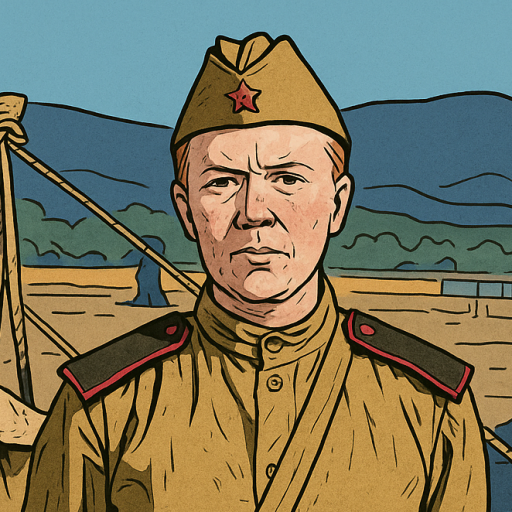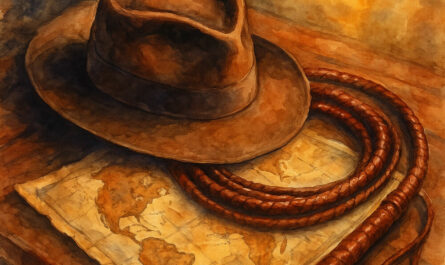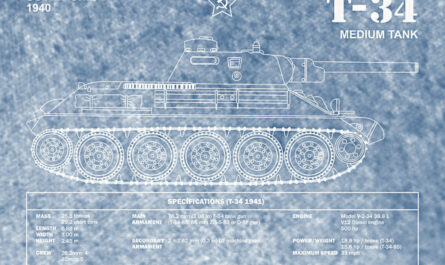– Blue Poppy to Grey Sparrow, do you read me? I repeat, Blue Poppy to—
– Reading you loud and clear, Blue Poppy. This is Grey Sparrow. What’s the situation?
– Airdrop successful. We secured the package just before the SS patrol showed up.
– Excellent. Any losses?
– Free Pegasus was taken. He was covering our exfil from the bell tower.
– Damn… Always the first to put himself on the line. And the cargo?
– Wooden crates. All stamped with the same name: Bolt Action.
– Bolt Action? That’s odd—wasn’t in the briefing. Still… the name rings a bell. Please standby… I’m sending in a veteran from the old network. He’ll know what to do with the gear. You’ll brief him and transfer custody. Hold position until then. Over and out.
Why Bolt Action?

Jack Brussell: Bolt Action is a wargame set during World War II. As a historical game, it stands apart from the other skirmish or wargames we’ve covered so far on Critical Hit. Adding it to our lineup brings a breath of fresh air while maintaining a sense of gameplay familiarity.
Indeed, Bolt Action shares something in common with Star Wars: Legion: the concept of the “fog of war,” that is, random unit activation. The difference is that in Bolt Action, the activation pool – represented by dice – is shared between both players. With each draw, the color of the die determines whether a friendly or enemy unit will activate, creating constant tension and high tactical uncertainty.
But beyond its mechanics, Bolt Action touches on a major part of our shared history. Referencing World War II, even through the lens of gaming, calls for restraint and reflection. The atrocities committed during that time demand that we approach it with humility, out of respect for the victims and for all the soldiers who gave their lives so that we might live ours in peace. This is why the idea of “playing WWII” can understandably be unsettling for some.
However, I believe that Bolt Action can also be a tool for awareness (or even transmission). It invites us to revisit the events of 1939–45, understand the geopolitical stakes of the era, and reflect on the human realities of the conflict. Losing a unit in this game doesn’t feel the same as it does in a sci-fi or fantasy setting – there’s a particular weight to it, tied to what these miniatures represent.
On a lighter note, I’d like to introduce Maurice, your new Bolt Action writer! He joined the team effortlessly and is already deeply committed to his role as a contributor to the community (several articles are already ready! What!?). As the most senior member of the writing team, he brings a wealth of experience in the hobby, which he’ll be sharing with you in the months ahead. I truly hope you’re as excited about this news as I am. Let’s give him a warm welcome!
Who is Maurice?

Maurice: Hi, I’m Maurice. Like many boys of my generation, I started my gaming life by assembling 1/72 scale toy soldier armies and using marbles to decide who got hit. Yes, I’m 51, born in the era of the first game consoles, in a world without the internet or cell phones.
I got into role-playing games in the late ’80s when I entered middle school. I caught the bug and played many games during the golden age of RPGs. I even created my own, adapting series and novels all through school, writing my own scenarios, supplements, and rulebooks.
In the early ’90s, I got swept up in wargaming: Squad Leader, then Advanced Squad Leader (ASL for those in the know), and eventually discovered Warhammer 40K (second edition) in French, which I played until 2004.
After that, I took a long break from both role-playing and wargames.
I returned to miniature games and role-playing games in 2009. In 2012, I launched a role-playing section at my town’s game library. I organized RPG sessions and miniature game events for five years. Then, for personal reasons, I had to step away from the hobby to focus on other things.
During the lockdown, I got back into painting miniatures. The creative urge came back, and I started a project to design a miniature game, offering players the chance to “step through the looking glass” and become creators of their own game worlds.
Recently, while hanging out at a miniatures club, a friend brought back the Bolt Action: Band of Brothers box after a trip to Normandy. We gave the game a try and I instantly fell in love with the system. That was all it took for me to start building a German army and begin playing regularly.
Why did Bolt Action draw me in?
As a game designer, I appreciate various elements in a game’s design, and Bolt Action checks several boxes I value in a miniature game. What first drew me in was the system, followed closely by the game’s historical setting and background. Price-wise, Bolt Action is also very competitive. For a reasonable budget, it offers three-hour games featuring multiple vehicles and squads on the table.

Need advice building your army list?
Join your country’s Bolt Action Discord community and get answers to your questions.



